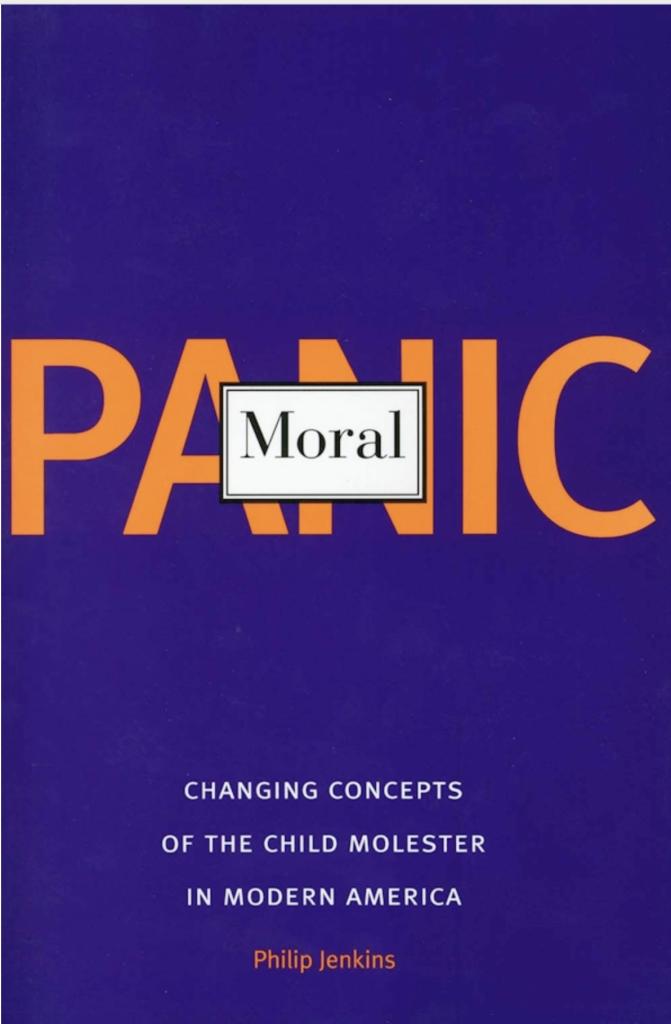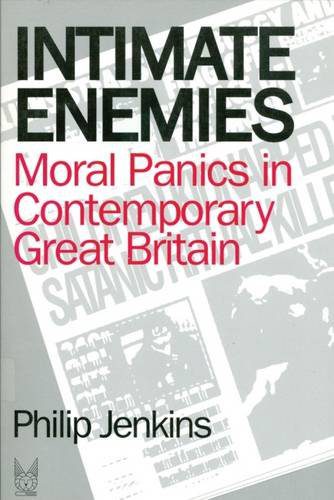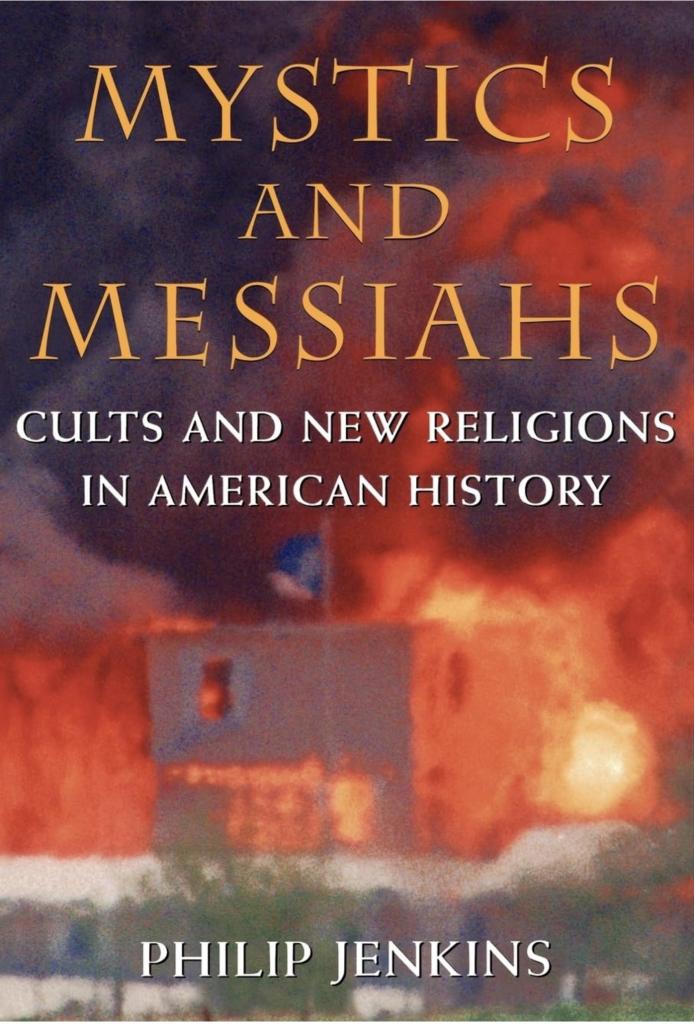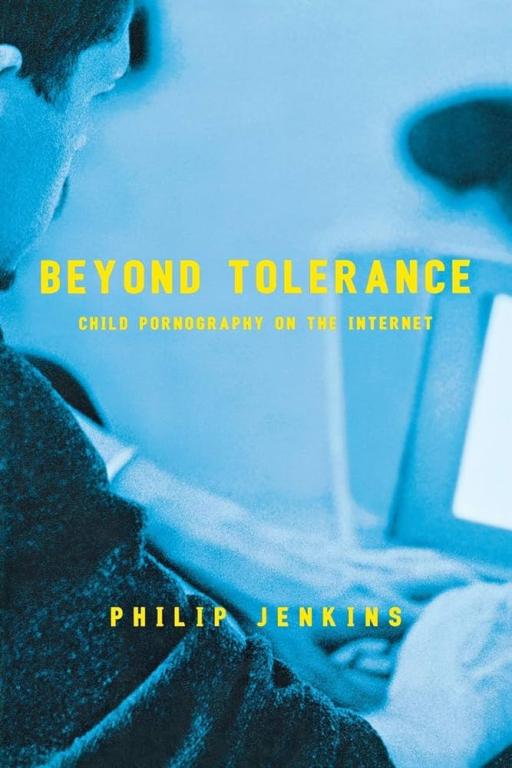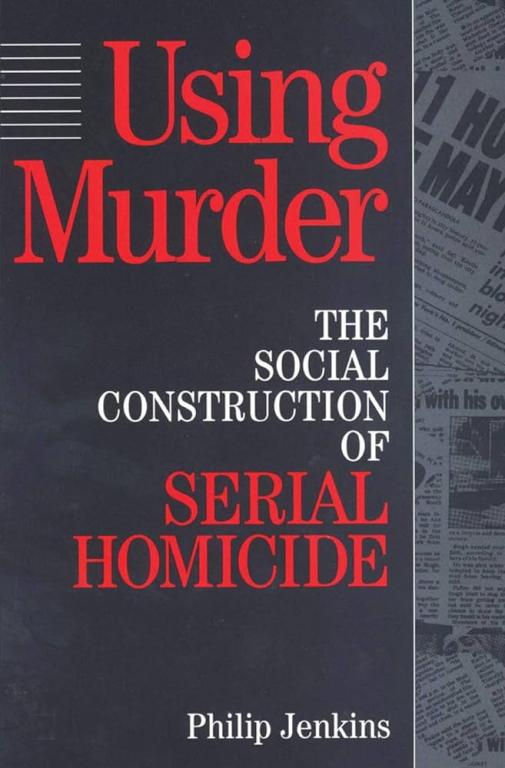If you look at the list of books I have published through the years, you will see a lot of topics that might seem out of the way – cults, drugs, child abuse, Satanism, pornography, terrorism, and more. What is going on here? Actually, this work is a lot less random and indiscriminate (and sensational) than it might initially appear.
As I remarked in my last post, my writing through the years falls into a couple of broad categories. There is my Christian History cycle, which runs to a dozen or so titles since 2000, and also more recently my Global Religion cycle. But before all that, before I was working primarily on religion, I was doing whole other kinds of research, and that was what I was known for. This present post represents a kind of auto-archaeological digging into that earlier phase of my career, my work on Social Problems. The act of putting together this post helps me think through the question of whether I might ever get back to those interests as an active agenda for new research and publication.
How Do You Judge Impact?
When assessing a particular scholar, universities often use citation counts, namely the number of times that person’s work has been cited by others, and in theory, this provides a nice objective way of judging one’s impact. Everyone knows the system is not perfect, as it is heavily slanted towards finding results in the hard sciences and biomedical fields rather than the social sciences, and in the social sciences rather than the humanities. Citations of books, as opposed to articles, are systematically undercounted. Even so, these counts can be a useful and comprehensible way of measuring things. If I look at my own count on Google Scholar, then I find over 15,000 citations throughout my career. Not surprisingly, by far my most cited work is my Next Christendom (2002), with almost 4,000 hits if you combine the different editions. But then look at my next most noted item, which is Moral Panic: Changing Concepts Of The Child Molester In Modern America, in the number 2 slot, with over 1,100 cites. For what it is worth, a major 2014 study in Nature found that only 0.026% of research papers in any discipline score over 1,000 citations, so Moral Panic is doing well. Nature did another piece on why such thousand-citation items should be seen as “outliers” and are thus particularly “impactful” (what a word!)
Then we move down my list to Using Murder: The Social Construction Of Serial Homicide (at #4), Intimate Enemies: Moral Panics In Contemporary Great Britain (#5) and Beyond Tolerance: Child Pornography On The Internet (#6). Each of these titles scores between five and seven hundred citations, which is very respectable, particularly for books, and this would gladden the heart of any promotion and tenure committee. But in terms of what I am known for these days, these titles may seem surprising and even eccentric.
Quite seriously, I have on more than one occasion dealt with colleagues who believe that a quite separate Philip Jenkins must be writing that other stuff. I have even been asked if I know the other Jenkins who writes so much on terrorism.
My Social Problem Sequence
To be specific, I published a series of books that together I call my Social Problem sequence, which included the following ten titles. These appeared over a little more than a decade, and from a variety of publishers:
Intimate Enemies: Moral Panics in Contemporary Great Britain (Aldine de Gruyter, 1992).
Using Murder: The Social Construction of Serial Homicide (Aldine de Gruyter, 1994).
Pedophiles and Priests: Anatomy of a Social Crisis (Oxford University Press, 1996).
Moral Panic: Changing Concepts of the Child Molester in Modern America (Yale University Press, 1998).
Synthetic Panics: The Politics of Designer Drugs (New York University Press, 1999).
Mystics and Messiahs: Cults and New Religions in American History (Oxford University Press, 2000).
Beyond Tolerance: Child Pornography on the Internet (New York University Press, 2001).
Images of Terror: What We Can And Can’t Know About Terrorism (Aldine De Gruyter, 2003).
The New Anti-Catholicism: The Last Acceptable Prejudice (Oxford University Press, 2003).
Decade of Nightmares: The End of the 1960s and the Making of Eighties America (Oxford University Press, 2006).
Constructing Social Problems
So what is happening here? Where did all this come from?
Before I defined myself as a scholar of religion, I was a Professor of Criminal Justice at Penn State University, where I worked on an area of sociology/criminology that is known as Social Problems. I used a theoretical approach called social constructionism, and what I studied was the construction of social problems. The basic idea is that every society has issues that it regards as problems, but it is not immediately obvious which issues will be regarded as more or less serious at any given time, or how they might be understood in terms of causation or cure. In one society, sexual threats to children might be regarded as a small scale and trivial threat (I hate to make that observation, but it is true). At other times and places, such threats are seen as a kind of ultimate evil. Concerns about drugs are at least as malleable. The same is true for terrorism, or homelessness, or violent crime, or sexual harassment, or … carry on the list as you choose.
What changes over time is not necessarily the nature of the social issue itself, but how people regard it. We have to understand the methods by which groups and individuals make and establish their claims, and this means understanding the role of pressure groups, of bureaucratic agencies, of political activists, and commonly, of religious and moral reformers. Research focuses on the interests that particular groups have in promoting a problem; the resources available to them to achieve their goals; and finally the ownership that they eventually secure over the issue, or the degree to which their analysis is accepted as authoritative. Constructionists often use the concept of the moral entrepreneur, who reshapes social values just as a conventional business entrepreneur shakes up the economic order. Of its nature, the kind of study I am talking about here overlaps substantially with social movement theory.
Just to take the example of child sexual abuse – the subject of my Moral Panic book – the most important activist groups historically include therapists and psychiatrists, criminal justice administrators, women’s groups, teachers and educators, sexual reformers and libertarians, and moral traditionalists and conservatives.
To be clear, this approach absolutely does not say that there is no objective core to these perceived problems. Constructionism means more than simple debunking, and a constructed problem is not “made-up.” Though we might challenge factual claims used to support a particular cause, only very rarely might we argue that a given problem has no basis whatever in reality. (The Satanism Scare of the 1980s and 1990s was one such exception, where there was lots of smoke and no fire). People really do misuse drugs, they really do commit sexual abuse against children, and serial killers really do commit multiple murders. But our understandings and definitions of such actions vary enormously according to the social and cultural setting, and the role of these different actors, claims-makers, and campaigners.
We are centrally concerned with studying rhetoric, the age-old art of persuasion. In conventional speech, we tend to scorn the term – “that’s just empty rhetoric!” – but in reality, this is the core of how problems are made, remade and interpreted. A constructionist study examines the means by which activist views are projected, through news media and popular fiction as much as through expert or professional sources. Also critical is the question of audience, of why the public are prepared to accept one rather than another of the given models offered them at different times. What rhetorical arguments do the various movements and activists deploy? How do they frame an argument about a given cause to ensure that it achieves the widest possible credibility? Commonly, this means building upon older problems that are believed to be serious and authentic: You know established Problem X? Well this new problem Y is actually a subset of it, so you need to take it just as seriously! This is all part of the critical process of contextualization.
Again, just how do particular people and groups acquire the status of “experts” on any given topic, the ones to whom the media immediately turn at the drop of a crisis? In the terms I used earlier, how do they win ownership of the given problem? And how does that expert status change over time? To take one example of many, you could actually witness the moment in the mid-1990s when the media overwhelmingly decided that the previously respected advocates of “recovered memory” were charlatans who should be ignored. Suddenly, the people complaining about “false memories” gained a new respect. Ownership of the problem changed hands.
By the way, social problems are often presented in terms of a “crisis.” We should never forget that this is a purely subjective and impressionistic term, commonly deployed by activists to indicate that the issue they are concerned about is extremely grave, and demands urgent action. (Journalists love the term as an empty magnifier). The word has no objective definition, and usually no relationship with quantitative evidence. If you will pardon the circular definition, a crisis is a set of phenomena that some group believes should be regarded as a crisis.
Over time, activism changes the understanding of problems, and in the process it has a radical effect on social discourse and partisan debate. Rarely does the construction of such problems and “crises” proceed in a rational and objective way, relying on empirical evidence. Rather, it is conditioned by underlying concerns, which in an American context very often involves racial nightmares, with fears over changing gender roles usually in play. If I hadn’t believed it, I wouldn’t have seen it with my own eyes.
Social problems offer a wonderful tool of analysis for understanding the changing fears of a given society.
An Age of Panics and Problems
The 1980s and early 1990s were an incredibly productive time for such fears and problems. Indeed, the media were dominated by fears and panics over child sexual abuse, Satanism and ritual abuse, and there were rising fears over the newly defined problems over clergy sexual abuse, and child pornography on the emerging Internet. Each, of course, was a crisis. Meanwhile, the Drug War was reaching terrifying proportions, as it devastated urban communities. What most of these social threats had in common was the alleged danger posed to children and the young.
These fears had a sizable impact on the way we talk. It was in these years that people first invented such labels as serial murder (or serial rape, or serial anything), stalking, grooming, profiling, predators (in a sexual context), and survivors. In 1977, the term child abuse was first used in the context of sexual maltreatment as opposed to physical violence, and that usage became standard in the 1980s. The term sexual harassment originated among radical feminists in the mid-1970s, but it only entered general parlance in the following decade. Elder abuse followed a similar chronology. Conversely, some words become unacceptable or even toxic. When I published my book on child pornography in 2001, that term was quite acceptable, which it is not any longer: today we are supposed to speak of child abuse images.
Problems beget words, and words shape problems. Language speaks us.
Constructing a problem also means shaping policy priorities in a way that agencies and budgets target topic A rather than B. Around 2000, constructions of terrorism had come to focus almost exclusively on far right and neo-Nazi threats to the near-total exclusion of Islamist activities. We saw the consequences of that distorted decision on September 11, 2001.
Understanding Fear
And that is why much of my research in that era involved studying the things that stirred the most public fear and concern, as I sought to understand the shifting nature of those fears. I must here acknowledge one major influence on my work at that time, namely the sociologist Joel Best, who published the classic Threatened Children: Rhetoric and Concern about Child-Victims (University of Chicago Press, 1990), among other important titles. If you ever want to know about understanding social problems, just turn to anything he has ever written. Joel was extremely generous and helpful in supporting my publishing ventures.
In light of what I said about social problem theory, you see that those titles of mine are not random at all, and there really is a very consistent agenda working through them all. In each case, I took an issue that was generally accepted as a pressing social problem, even a “crisis,” and tried to write its history. I showed how concern had evolved over time, and how and why it had cone to such prominence in recent times. Commonly, that meant studying the workings of media and bureaucratic agencies. It also meant observing how interest groups made their arguments, which in a modern context involved the use (and gross abuse) of statistics. Some of the statistics used for the purpose of grabbing media attention were lulus. Every year, four thousand Americans fall victim to serial killers! Every year, fifty thousand American children are abducted by strangers! Or maybe killed by Satanic cults! (No, no, and no). Guy Debord famously noted how in a modern media-saturated world, “All of life presents itself as an immense accumulation of spectacles. Everything that was directly lived has moved away into a representation … Real life is materially invaded by the contemplation of the spectacle and ends up absorbing it and aligning itself with it.”
Frequently, the kind of historical analysis I was doing showed that contemporary problems had deep roots, and even a cyclical nature. When we were told that a problem was New! Unprecedented! Unique!, you could easily show that it had many historical precedents. The American cult scares of the 1920s and 1940s looked very much like that of the 1970s. The serial murder panic of the 1940s provided a close comparison to that of the 1980s, and so on. Time and again, looking for parallels to modern-day social nightmares took me back to the Progressive era, those dazzlingly creative years between about 1890 and 1915. There is not much new under the sun.
My Decade of Nightmares provided a kind of capstone to this whole earlier project by showing how those surging panics and problems in the 1980s had allowed and accelerated the fundamental rightward shift of American life and culture during the Reagan era, and the effective repeal of 1960s liberalism. Throughout, issues of gender, race, and demographics were to the fore. (In a future post, I will also show how intimately many of these problems were bound up with the religious history of the era).
By the way, the books in that Social Problems sequence were generally very well received. I can’t help sharing one review that might be the best I ever received on anything. Writing in Foreign Affairs, Sir Lawrence Freedman (Sir Lawrence Freedman!) called my Images of Terror “a brilliant, uncomfortable book, its impact heightened by clear, restrained writing and a stunning range of examples.” Reading that, I can die happy.
Moving On
So if things were going so well in academic terms, why did I give up on those Social Problem topics? One reason was that I had said all I reasonably could on these matters, and had no wish to repeat myself ad nauseam. But more significant, I became steadily more interested in religious themes, specifically in Global Christianity and Christian history, and that just took up all my professional time for the next couple of decades. Related to that, I moved my departmental affiliation to Penn State’s Religious Studies Program, where I remained until 2011.
In summary, then, looking back at my Social Problems work, then that’s all shove behind me, long ago and far away. But might I ever go back to these older approaches? Is a social constructionist about to re-emerge from his closet? Let me address that thought in an upcoming blogpost.


